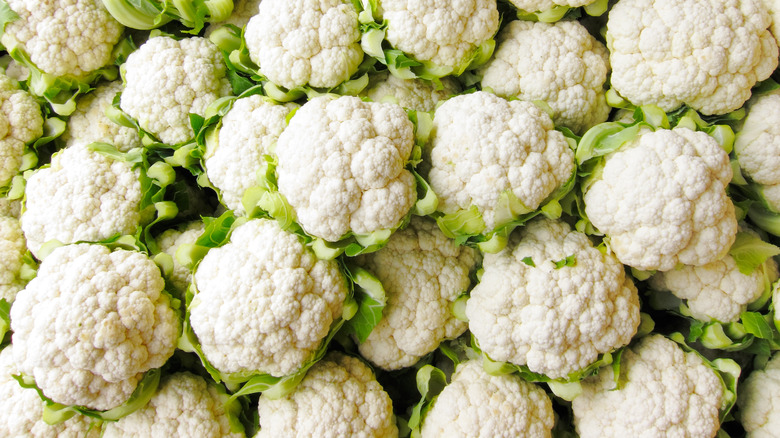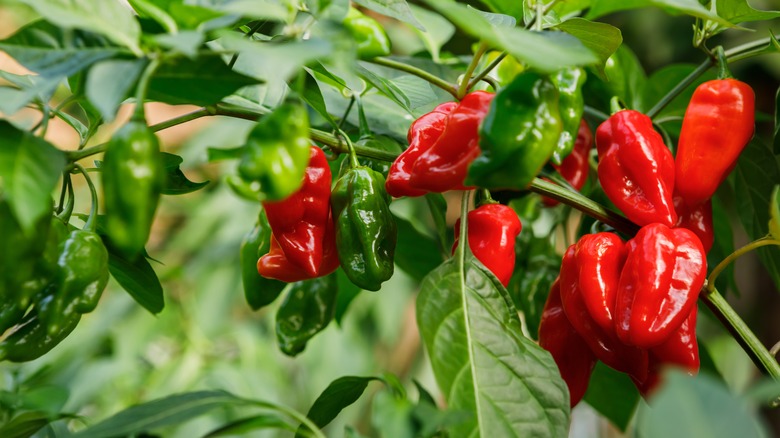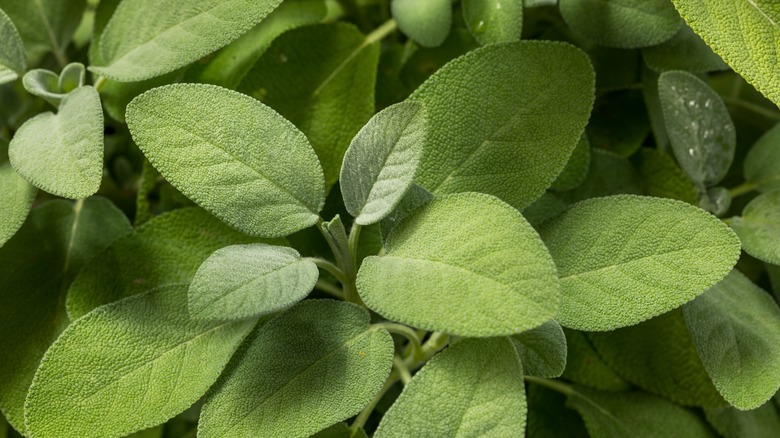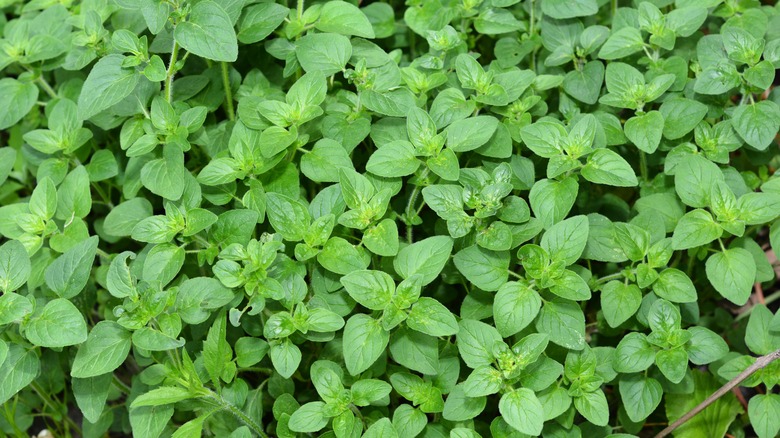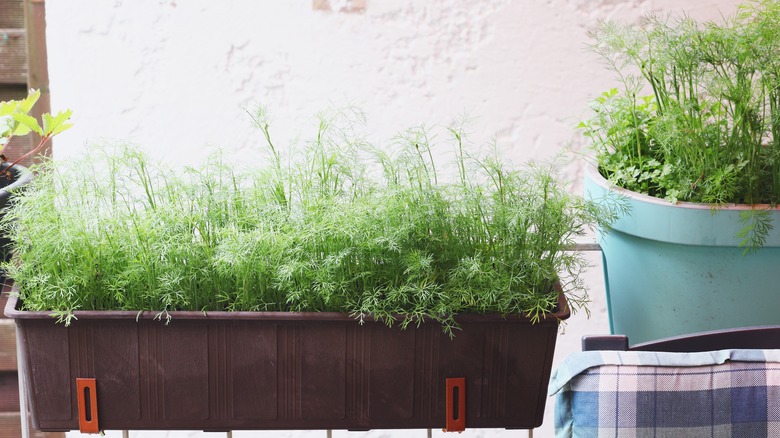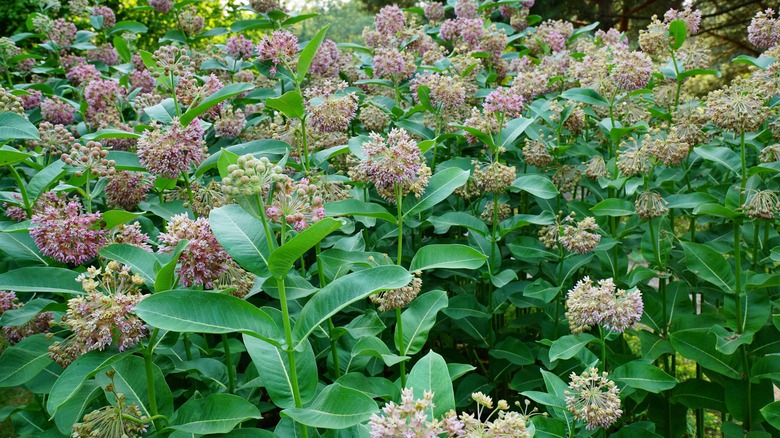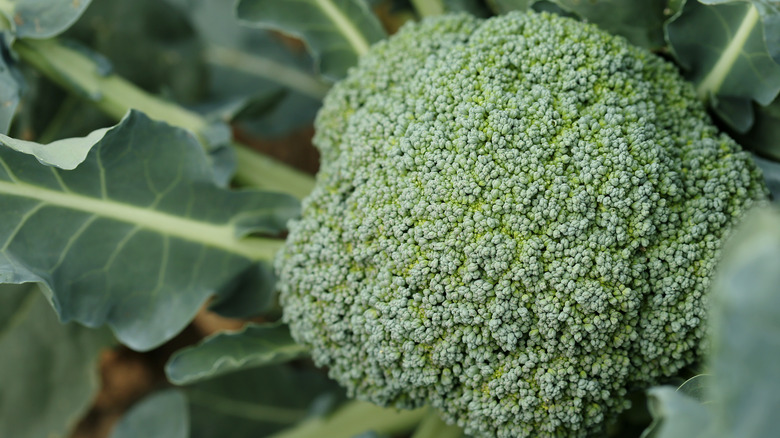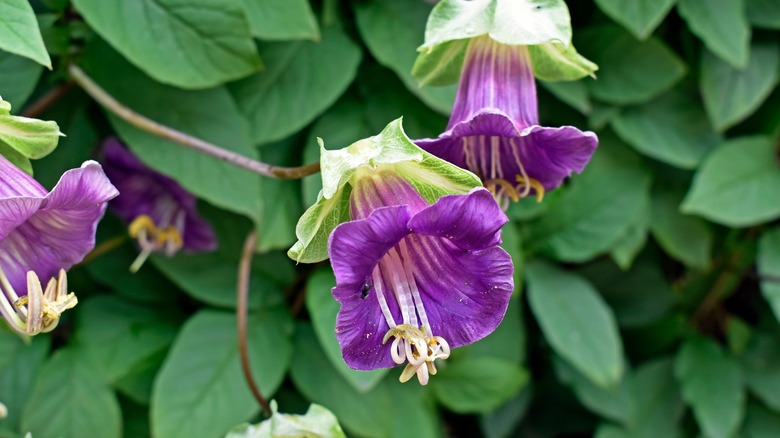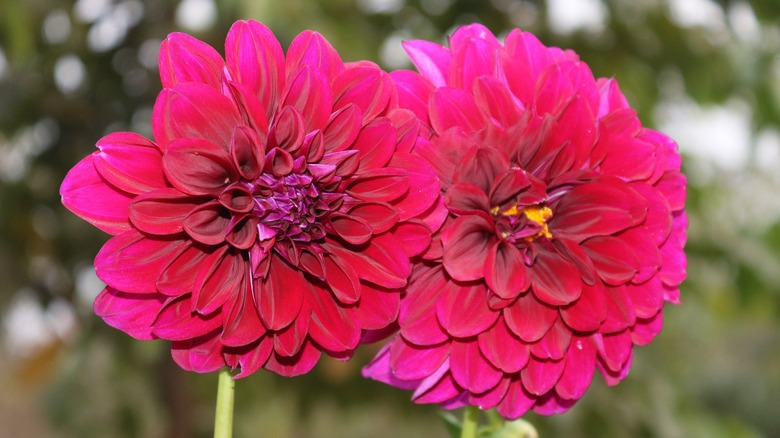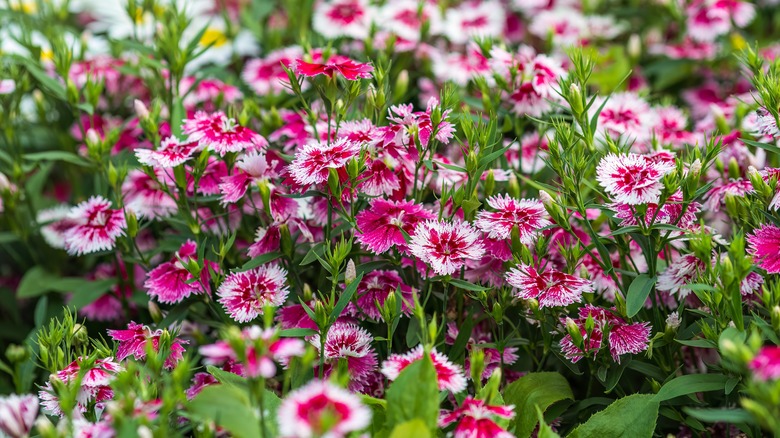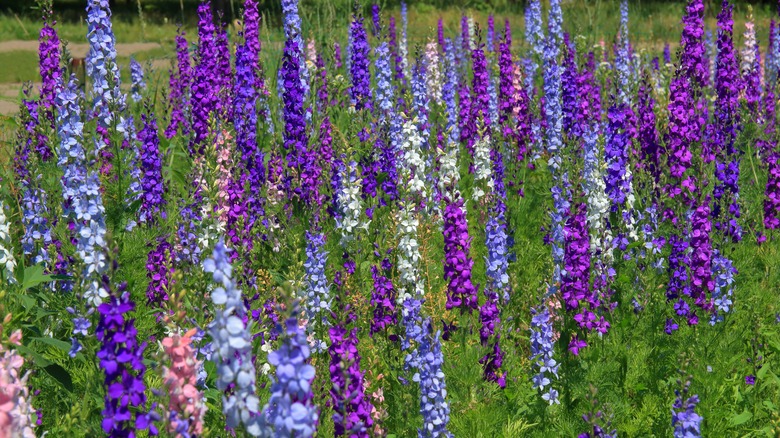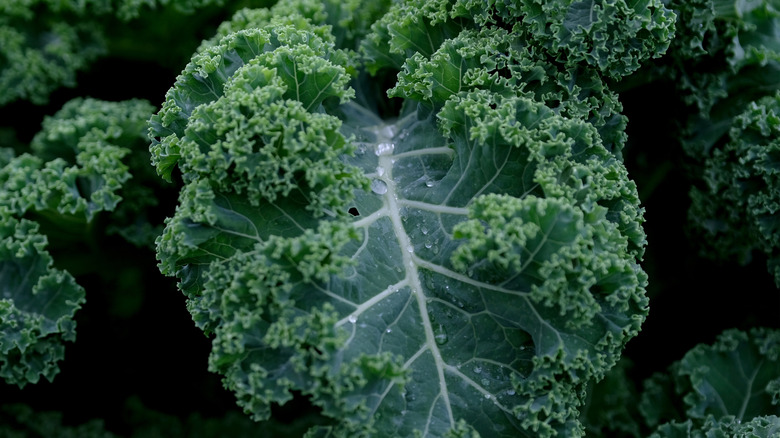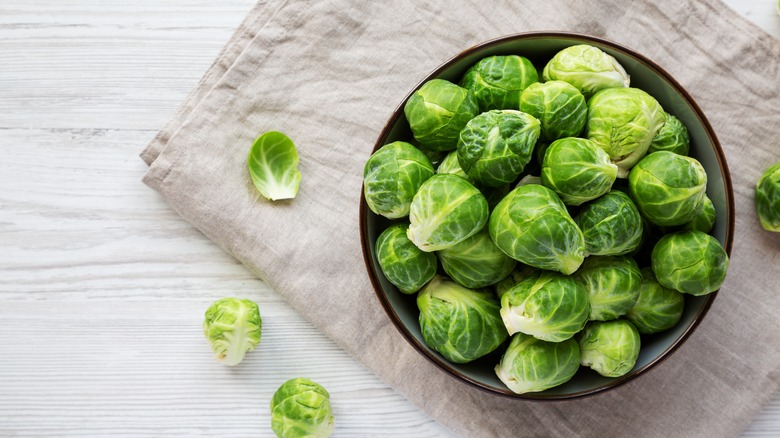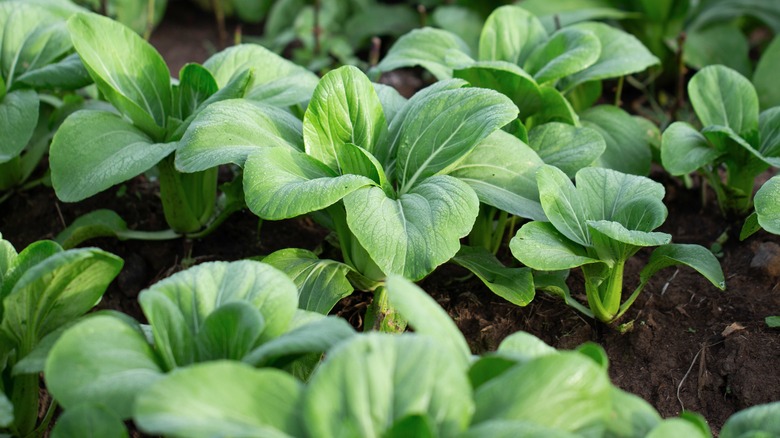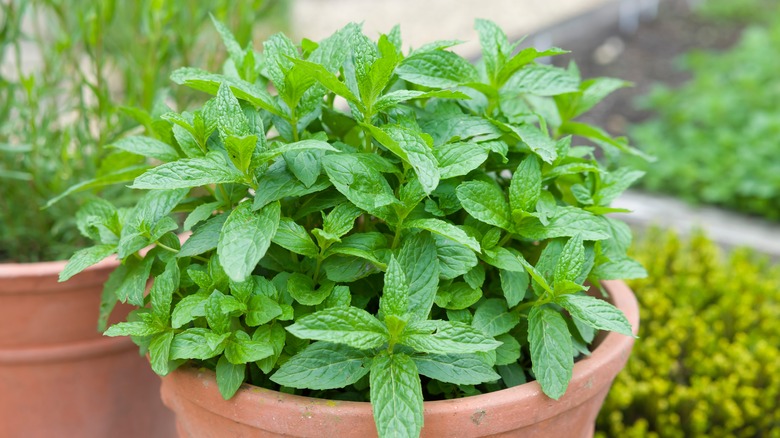15 Plants You Should Start Sowing In Late Winter To Set Your Garden Up For Success
When the weather is frosty and the ground outside is covered in snow, planting new things in your garden might be the last thing on your mind. Funnily enough, the late winter season is the perfect time to sow many types of seeds for a bountiful spring harvest. Of course, the best plants to sow in the winter depend on your climate. If you live in New York or Colorado, for example, the types of seeds that will thrive will be very different from those in Florida or Texas. However, gardeners with a greenhouse will find that they can sow most of their new crop when it's still cold with fantastic results.
Whether you are growing all your fruits and vegetables in your backyard garden, or would just like a head start on some beautiful spring flowers, these flowers, vines, and vegetables tend to do the best when sowed in winter.
1. Cauliflower is great for gardens in the southern U.S.
Cauliflower likes to grow in cool temperatures. So much so that most of the cauliflower that Americans buy at the grocery store is grown in the cool valleys in California. It's in the same family as broccoli, as it consists of many florets (sometimes called heads) attached to a thick central stalk. The plant is typically white, but also naturally grows in other colors, too –- like purple, yellow, and orange. Cauliflower can grow in a winter garden; it does best when the ambient air temperature is around 60°F to 69°F.
You should plan to plant your cauliflower crop no earlier than a month before the last predicted frost in your area. For gardeners in the Southern U.S., this could be as early as February, while northern gardeners might find themselves waiting until April. You can sow the seeds in indoor boxes to keep them warmer for longer, but those in warmer climates can sow them directly into the ground. When planting, space the seeds about 18 to 24 inches apart with roughly 30 inches between each row.
2. Chili peppers do well if sowed toward the end of winter
Chili peppers are indigenous to warm, tropical environments. If you live somewhere like Florida or southern Texas, you will find that your pepper plants are perennials, meaning they come back year after year. If you have a garden in the north, you must take special care to overwinter your plants indoors to keep them going. However, no matter where you live, the seeds for these plants can be sowed during the winter.
To know when it's time to sow your pepper plants, keep an eye on the overnight temperatures. As winter nears its end and the thermometer doesn't dip below 40°F, you will know it's safe to begin. Remember that even if sowed in overwintering jugs, pepper plants are particularly fragile when it comes to frost, so the weather needs to be consistently above freezing for things to work. While watering consistently is key, peppers do poorly when their roots remain wet, so make sure your sowing jugs have proper drainage.
3. Sage can be sowed starting in March, depending on your climate
Sage is a perennial herb with lovely aromatic leaves. It has a strong flavor and is commonly used in stuffing, sauces, and teas. It also has a few medicinal benefits and plenty of cultural significance around the world. Luckily, it is also quite hardy and can be grown well in both cold and warm climates. The most common type of sage – Salvia Officinalis – has been known to thrive in temperatures as cold as 5°F.
If planting indoors, you can begin sowing sage around the end of February or late March. The farther north you are, the later this will be. Grab a seed tray and fill it about 75% with moist soil. You can scatter your packet of sage seeds across the soil and top it off with a bit of vermiculite for health. You can then cover the tray with plastic wrap. Remove once every few days to water and ventilate. Once you have noticed your sage is about 3 inches tall, it's time to plant it outside.
4. Oregano can thrive in chiller temperatures
Oregano is an herb that is native to the Mediterranean but grown globally for its flavorful leaves. You can use it as a dry or fresh ingredient to add amazing taste to your meals. Great news for all budding chefs: The herb does well growing outside in colder temperatures, sometimes as low as 10°F. If it drops this cold outside, your oregano will still make an appearance in the spring.
If you live in growing zones 6 through 10, you can sow your oregano seeds in your garden after the final overnight frost in late winter. If you live in zones 1 through 5, you will need to sow your oregano seeds indoors and bring them out to the garden later in the season. Luckily, after this first sowing, your plants will continue to thrive year after year, no matter your zone, due to their hardiness.
5. Dill is great for Southerners in the early winter months
Dill is a delicious herb that you can use to add a pickle-like tang to relishes, potato salads, and even coleslaw. It is known for its distinctive feathery green leaves and sweet taste. Originally grown in the Mediterranean and Asia, dill is a great addition to most gardens -– but particularly southern ones in the winter.
If you live in zones 6 through 10, you can sow dill from the late fall through the earlier winter months. Later in winter, keep an eye on the overnight frosts and plan to sow the seeds about a fortnight before the last predicted one. The plant will also grow in zones 2 through 5 and 11, but will need to be kept inside to keep the temperature more under control. Dill grows best from seeds, which you should layer on top of each other about once or twice a month. This way, when the summer bloom comes, you will have plenty of dill to harvest.
6. Milkweed prefers winter sowing
Milkweed is native to North America. It is a vital plant for monarch butterflies as their larvae's primary food source. Many gardeners are choosing to sow the plant to support the monarchs, as their overall population is shrinking at alarming rates. The plant has beautiful pink or lavender flowers that attract pollinators and are a great addition to any garden. A tip for sowing your milkweed in both cells and jugs is to pre-moisten the soil mix. This way, the plants won't be at risk of overwatering when they are planted.
Sowing milkweed seeds in early winter is recommended for those living farther south. If you live in a more frosty climate, you can wait until the winter solstice (typically around Christmastime) to begin the process. Something to remember, however, is that not all types of milkweed do well sowed in the winter. The tropical, swan, and giant varieties of the plant need to wait until spring, but all other options are fine for winter.
7. Broccoli can be sowed three weeks before the last frost date
Broccoli is a cruciferous vegetable and a common food on many of our plates. Broccoli takes time to grow, so don't rush its progress. A bonus for your patience is that once you pick the main head, the stalk will still produce many smaller bits of the vegetable. It is a hardy plant that grows well in cool soil, sometimes as low as 40°F.
When thinking of planting broccoli, there are two different timelines to consider, depending on where you grow it. If you want to sow the seeds outside, check the predictions for winter frosts in your area. Choose to sow about three weeks before the final overnight frost. If you are sowing indoors and will move outside later, you can begin sowing up to eight weeks before the frosts are finished. In warmer climates, such as zones 6 to 9, this timeline could put you solidly in the middle of the winter months.
8. Cobaea can be sowed in winter but tends to still flower at the same time
Cobaea is also known as cup and saucer vine. It is a beautiful flowering plant native to Mexico, Central America, and parts of South America. It has lush, heart-shaped leaves and tendrils that love to climb structures like arbors and trellises. Because of this, the plant should be trimmed often to avoid a total garden takeover. The large bell-shaped flowers of cobaea come in various colors, including purple, pink, and white. Because it is a tropical plant, it does well during winter sowings for zones with similar climates.
If you live in warmer climates, you can begin sowing cobaea inside as early as February, but if you live in the north, you should wait until at least early March to avoid frost damage. Some gardeners have found that the earlier-sown seeds tend to bloom around the same time as their later-sown counterparts. Nevertheless, keep the seedlings inside or unsowed until you can be sure the ambient air temperature will not dip below about 45°F.
9. Dahlias will work if you plant seeds, not tubes
Dahlias are native to Mexico and parts of Central America but have become popular ornamental plants cultivated worldwide. They are perennials with tuberous roots and large, showy flowers that come in single, double, and cactus-flowered options. Dahlias add a burst of color and elegance to any garden. They can also succeed if they are sowed in January – but only from seeds and not from the traditional tubes.
The only risk of growing the flower from seeds is that a new plant with distinctive flowering patterns and colors will form. When you grow a Dahlia from a tube, it tends to mimic its parent plant. If you are okay with this variety and the possibility of surprise, it is best to sow Dahlia seeds in moist soil indoors. Keep them at about 60-68°F. When the last frost has hit your area, it is safe to move your flowers outside for the season.
10. Dianthus (Carnation) will blossom even if sowed in the dead of winter
Dianthus is more commonly known as a carnation. It is a flowering plant with charming, fragrant blooms that surprise gardeners with many different colors, like yellow, peach, red, white, and even pink. Dianthus is resilient and can thrive in different garden settings, even if sowed in the dead of winter.
In fact, some gardeners have had their best blossoms ever when sowing dianthus seeds in late January and early February. To mimic these results, you should fill a milk jug (or the plastic container of your choice) with well-draining soil. From there, sprinkle dianthus seeds throughout. You will find that the seedlings are quite hardy and will grow quickly. They can often withstand early spring frosts without any negative effects. You will just need to top up the soil on occasion so that the root system does not freeze. When the next winter comes, simply cut back your blooms so that they put down deeper roots and come back stronger in the spring.
11. Delphinium needs the cold to succeed
Delphiniums are tall, vibrant flowers with spike-like blooms. They have distinctive lobe-shaped leaves and come in cobalt, lilac, and pink, among other colors. In climates that skew warmer a bit earlier in the year, like zone 6, delphiniums tend to do best if sowed in early winter, like December and January.
This is the best practice because delphinium seeds need plenty of time to stratify before you sow them. For delphiniums, this means chilling the seeds in the fridge before sowing. Some gardeners have seen up to a 90% germination rate from seeds using this chilling method. While you can just place the packet in the fridge, for the best results, remove the seeds from the package and pour them between wet paper towels or napkins. Place the carefully wrapped seeds inside a plastic food storage container or plastic bag and leave them for about 36 hours.
12. Kale works well in winter for a spring harvest
Kale is a nutrient-rich leafy green vegetable that many would call a superfood. It's packed with vitamins, minerals, and antioxidants, making it a popular ingredient in smoothies, salads, and sautéed side dishes. It is a resilient vegetable that can grow in different climates, making it widely cultivated. The best part is that you won't have to wait long for your spring crop of kale because you can sow the plant when it's cold out.
Some gardeners have even had great success sowing kale toward the end of winter in February for a bountiful spring harvest. For a germination rate of almost 100%, you will want to sow the kale seeds in containers (like milk jugs or seed trays) indoors first. You can then transport it to the garden later in the season, although the plant is hardy enough and has been known to withstand early spring frosts. In fact, experience suggests that most kale plants can withstand up to three or four months of overnight frosts without incident.
13. Brussels sprouts grow slowly but do well in winter
Brussels sprouts are a cool-season vegetable that thrives in winter with exposure to frost. Cold weather enhances their flavor by making them sweeter. Planting them in winter allows for a more robust and flavorful harvest.
You can begin sowing Brussels sprouts as early as February in most climates. They take a long time to mature and sprout, so you will need to plan your growing season carefully. If the ground is too hard for sowing in February, you can begin the process indoors, inside a milk jug or seed tray. Before transporting the seedlings outside, wait until after the last frost. They must also be about 4 inches tall as well if they are going to survive. If you prefer to sow your seeds straight into the ground, you need to wait until at least March. However, depending on your climate, the ground might not be ready until May.
14. Bok choy should be sowed at the end of the season
Bok choy is sometimes called Chinese cabbage. It is a leafy green vegetable with crisp stems and dark green leaves, which is a staple in Asian cuisine. If you have a backyard garden, it's also a relatively easy vegetable to grow, as it doesn't need too much sunlight. Plus, you can sow the seeds for the plant toward the end of winter for plenty of returns come springtime.
The best way to time your bok choy crop is to look up the final frost of spring and then count backward by at least four to six weeks. Depending on your growing zone, this could be as early as February or as late as April. You should add more seeds to your garden about every two weeks. This way, the plant reaches maturation in waves, so you will never be short of ingredients for your favorite dishes.
15. Mint loves the cold
Mint is a hardy plant that grows so well that some gardeners would consider it almost invasive. It performs best when the weather is between 50-75°F. However, you can sow it for best results well before that due to the plant's tenacity.
When sowing mint seeds indoors, check the forecasted final frost in your area. Then count back about eight to 10 weeks, and you have your date. For best results, place the seeds at least 1/4 inch deep in the soil, and keep the soil wet and warm. You can wait until it begins to warm up outside and do much the same; however, you will need to remember to keep each plant about 18 inches away from its neighbor so it doesn't completely grow together and take over your garden. From there, you can cut back the mint each winter and it will continue to spring back when the weather heats up again.

